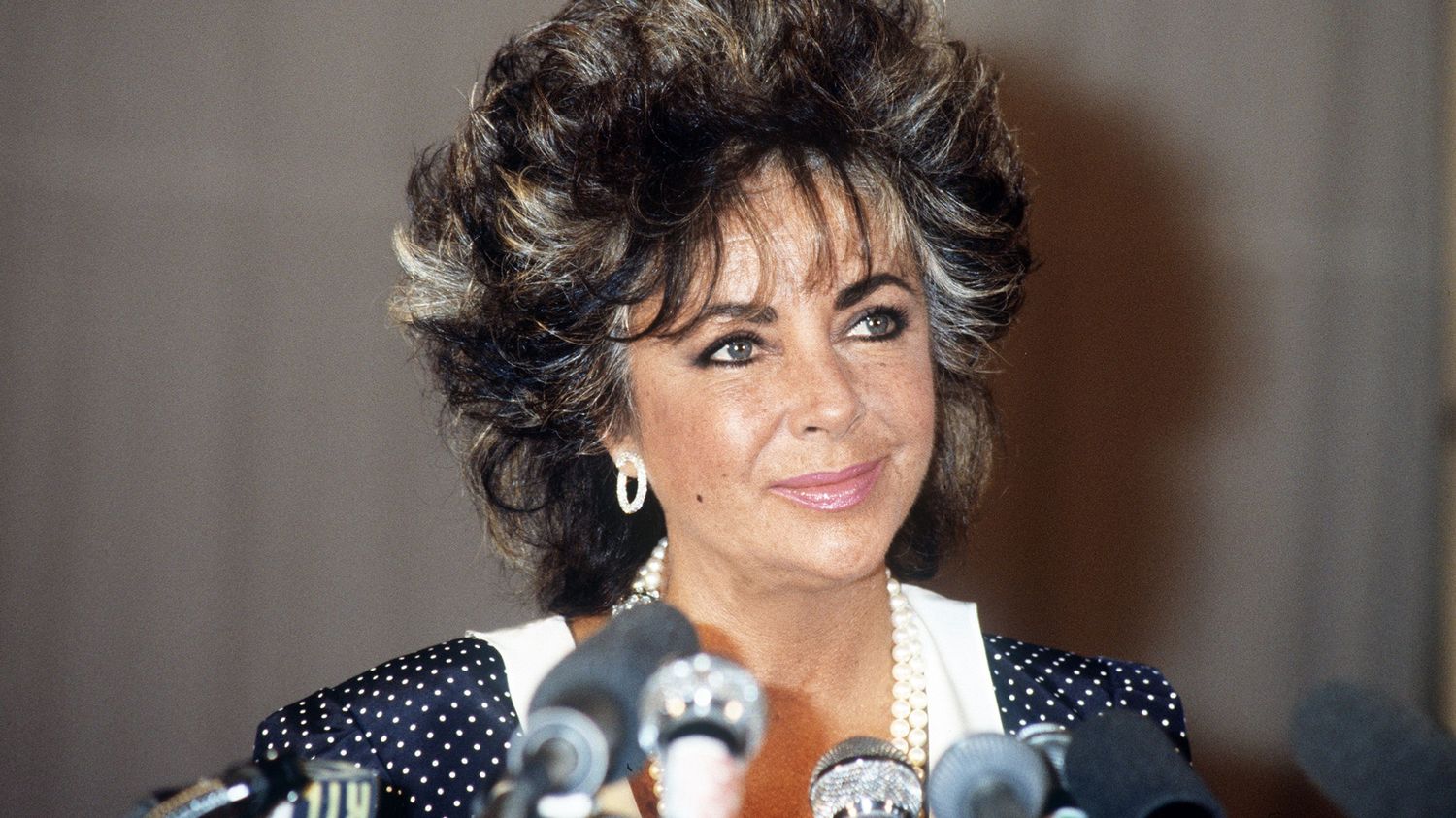
10 Dec 23 Reasons Why Elizabeth Taylor Was the Ultimate AIDS Activist
Taylor was one of the first celebrities to take up AIDS activism, long before it became a cause celebre. She used her stardom to draw attention to the epidemic, and to get people to open their wallets. Her legacy lives on in her own organization, the Elizabeth Taylor AIDS FoundationOpens in New Window, as well as those she helped found, like amfAROpens in New Window, and those named in her honor, like the Elizabeth Taylor Medical Clinic at Whitman-Walker Health in Washington, D.C.
Below, we share some of the details of Elizabeth Taylor’s singular legacy as an AIDS activist. There will never be another like her.
1. She chaired the first American fundraiser for HIV/AIDS.
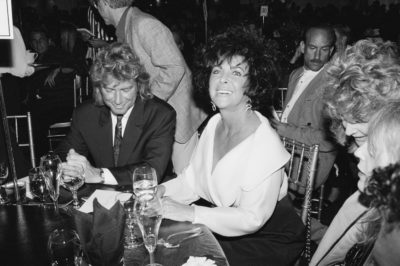
In 1985, with several friends already ill, Taylor agreed to chair AIDS Project Los Angeles’ Commitment to Life dinner, one of the first large-scale AIDS benefits in the U.S. She and her publicist, Chen Sam, organized the dinner from a small office she had rented. “I didn’t want to be honorary,” she said. “I wanted to actually do the work, make the phone calls, because this was going to be a toughie.”
But many celebrities didn’t want to be attached to such a stigmatized disease. “I have never had so many ‘no’s said to me,” she recalled. “They didn’t want to come to the evening, didn’t want to be associated. Some very big names [said no]. People not only slammed doors in my face and hung up on me, but I received death threats.”
She still managed to get some major stars to attend, though, including Madonna and Warren Beatty, Sammy Davis Jr., Cher, Stevie Wonder, Cyndi Lauper, and Burt Reynolds, who emceed. Statements were read on behalf of Rock Hudson and President Reagan. The event netted AIDS Project Los Angeles over $1 million, twice what the organization expected.
2. She co-founded the National AIDS Research Foundation.
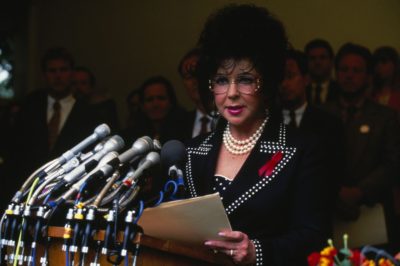
In 1985, Taylor and Dr. Michael Gottlieb co-founded the National AIDS Research Foundation in Los Angeles to study the virus, search for a cure, and help people living with AIDS.
3. She helped found amfAR.

Eventually, the National AIDS Research Foundation was combined with Dr. Mathilde Krim’s AIDS Medical Research Foundation to become the American Foundation for AIDS Research, or amfAR. Krim and Gottlieb co-founded the merged group, and Taylor was its international founding chairperson. The foundation also benefited from a $250,000 bequeath left by Rock Hudson in his will.
4. She established the Elizabeth Taylor AIDS Foundation.

The Oscar winner established The Elizabeth Taylor AIDS Foundation (ETAF) in 1991 to support organizations delivering direct care and services to people living with HIV/AIDS, an often overlooked aspect of the epidemic. She got the seed money for the foundation by selling her photos from her wedding to Larry Fortensky to People magazine for $1 million.
Today, ETAF also provides funding for HIV prevention education and advocacy programs throughout the world. To date, more than 675 organizations in 44 countries have benefited from ETAF funding.
5. She used her fame to help people with HIV/AIDS.
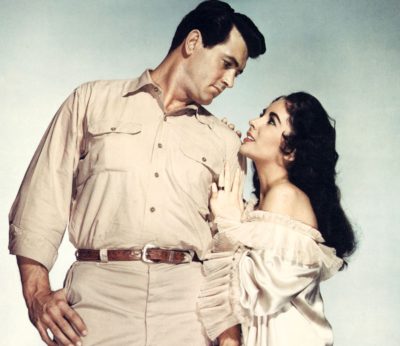
“I decided that with my name I could open certain doors, that I was a commodity in myself—and I’m not talking as an actress,” Taylor told Vanity FairOpens in New Window in 1992. “I could take the fame I’d resented and tried to get away from for so many years—but you can never get away from it—and use it to do some good. I wanted to retire, but the tabloids wouldn’t let me. So I thought, ‘If you’re going to screw me over, I’ll use you.’”
6. But she didn’t do it for the attention.
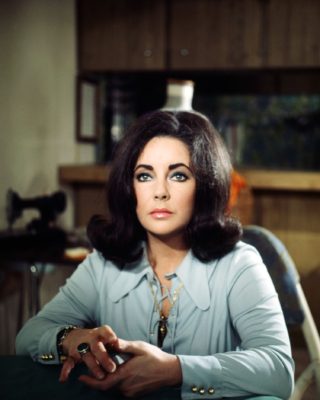
“She would go quietly, with no media, with no press,” friend Kathy Ireland told Entertainment TonightOpens in New Window. “She would go in to a hospice and she would hug patients who had just not felt that human contact.”
“Her lawyers told her not to get involved [in AIDS activism],” Tim Mendelson, her personal assistant for more than two decades and now a trustee of her estate and officer of The Elizabeth Taylor AIDS Foundation, tells NewNowNext. “She got death threats. When she did Love Letters in 2007 with James Earl Jones, the Westboro Baptists were outside picketing. When she did a candlelit march in D.C. in 1998, she got a lot of backlash. But she never cared.”
7. She stood up when no one else in Hollywood would.
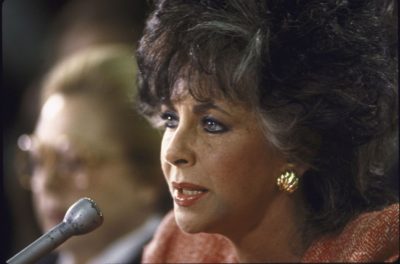
“When I saw the kind of hypocrisy that was going on, I thought it was terrible,” Taylor said. “The industry knew homosexuals were being hit hard, but instead of extending a loving hand and saying, ‘You helped me get to where I am today, without you I wouldn’t have made it,’ they turned their backs.”
Frustrated by the apathy and rejection, “I remember complaining, ‘Why isn’t anybody doing anything? Why isn’t anyone raising money?’” she said. “And it struck me like lightning: Wait a second, I’m not doing anything.”
8. She helped get the Ryan White Care Act passed.
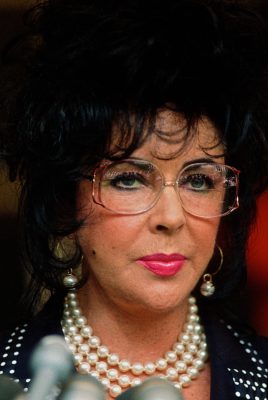
In 1990, Taylor testified before Congress about the need for the act, which provides a safety net of treatment for lower-income Americans with HIV/AIDS. Even homophobic Republicans were dazzled: Vanity FairOpens in New Window reported staunch Utah Republican Orrin Hatch “left the hearings grinning like a schoolboy who had just been kissed by the prom queen.”
“You could explain to the senators who Angelina Jolie is—but no one had to explain who Elizabeth was. She was it for them,” said Michael Iskowitz, Sen. Edward Kennedy’s chief counsel on HIV. “I’ve seen many celebrities come to the Hill to appear before Congress, but absolutely no one had the effect that she did.”
9. It was personal for her.

Taylor lost many friends early in the epidemic, including Halston, Herb Ritts, and, of course, Rock Hudson. Her person secretary, Roger Wall, took his life in 1991 instead of succumbing to the ravages of AIDS.
But the virus affected her family, too: In 1984, Taylor’s daughter-in-law Aileen Getty became increasingly depressed after the birth of her son. Taylor took her on a trip to Paris, where she was heading on behalf of amfAR. Exposed to her mother-in-law’s work, Aileen became increasingly worried her past drug abuse meant she could be HIV-positive. Taylor remained supportive and comforting throughout and, when they returned, let her stay at her Bel Air mansion. Eventually, Getty took an HIV test and learned she was indeed positive.
Taylor remained steadfast, but Getty left Bel Air and threw herself into drugs and partying, believing death from a drug overdose would be more “respectable” than dying from AIDS. She credits Taylor, whom she calls Mom, with giving her “the power and will to live.” “Without the love of Elizabeth Taylor in my life, I would probably be dead—if not physically, most certainly emotionally,” Getty, now 61, told The AdvocateOpens in New Window. “Mom loved me through my shame and held me tight. This can be very difficult: If you do something wrong, sometimes you feel that you want to be scolded or punished for your actions, as opposed to being loved and supported. Mom just loved me.”
10. But that’s not why she cared.
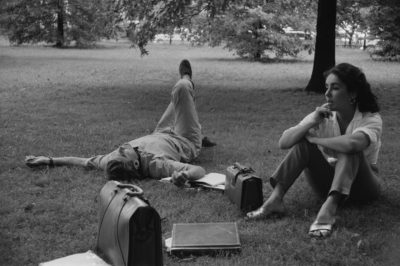
“AIDS was important to her, not because Rock Hudson had AIDS or because her daughter-in-law had HIV. She got involved because she couldn’t stand to people see suffer,” says Mendelson. “She suffered so much from loss, death, and medical issues, she had so much compassion. Whether it was a friend, a family member or strangers, she couldn’t stop herself from trying to help.”
11. She kept it real.

“She wasn’t snobby,” says Mendelson. “She appreciated a Harry Winston diamond over one you get at Zale’s, but she wasn’t elitist… We have notes she wrote as a child [in the archives], and you can see her character didn’t change. She had an appreciation for everything she had, and everything she was given.”
12. But she also meant business.
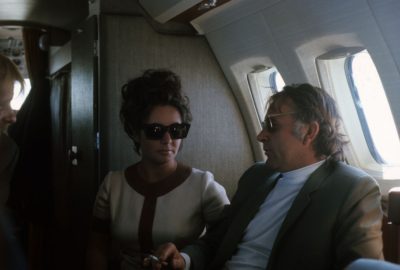
“She was very clear in her ideas—from Point A to Point B was a straight line,” recalls Mendelson. “She was a serious, significant person.”
13. And she spoke the truth.
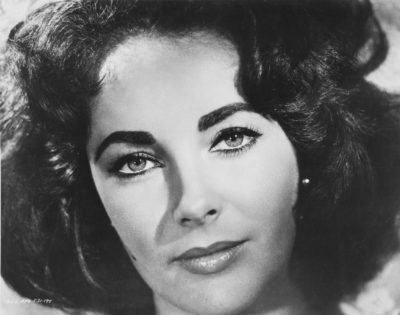
Taylor came of age in Hollywood’s golden era, when frank discussions of sex—any sex—were strictly forbidden. But she didn’t refrain from being blunt when she needed to be. At the Freddie Mercury Tribute Concert at Wembley in 1992, she exhorted the crowd, “Every time you have sex, use a condom. Every single time. Straight sex. Gay sex. Bisexual sex. Use a condom, whoever you are.”
14. She got Ronald Reagan to address AIDS.
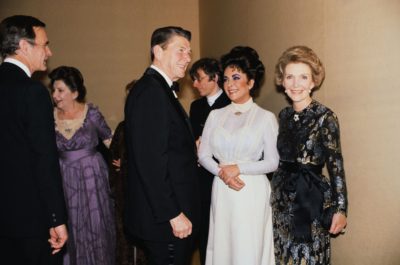
President Reagan had initially been wary of addressing HIV, and potentially alienating his conservative base. In 1987, Taylor wrote to him personally, asking him to give the keynote address at amfAR’s fundraising gala.
“Your participation in the dinner would mean a great deal to not only the American Foundation for AIDS Research but also to people, like me, who are critically concerned about the impact of the ever-growing ‘AIDS epidemic,’” she wrote. “It is hard for me to actually put into words what it would mean to me personally and to all of us trying to find a cure for this disease if you [and Mrs. Reagan] were to accept my invitation.”
Reagan agreed: “America faces a disease that is fatal and spreading,” he said in his addressOpens in New Window. “And this calls for urgency, not panic. It calls for compassion, not blame. And it calls for understanding, not ignorance.”
15. She even convinced Bob Hope to perform at an AIDS benefit.
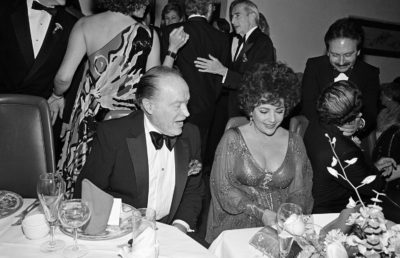
Taylor not only attended Gift of Life gala in 1986Opens in New Window, she got the veteran comedian to emcee. Proceeds from the event, which included the auction of prized Arabian horses, totaled more than $800,000.
16. She helped popularize the red ribbon.
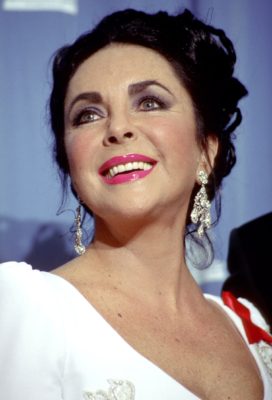
The group Visual AIDS debuted the ribbon as a symbol of support for people living with HIV/AIDS at the 1991 Tony Awards. But it was the following year, when Taylor wore the ribbon at the 1992 Oscars, that the world took notice. “When Elizabeth Taylor pinned one on, it became an internationally renowned symbol of AIDS awareness,” said Visual AIDS executor director Nelson Santos. “She was rarely seen without a red ribbon.”
17. She licensed White Diamonds, a perfume, to raise more money for AIDS causes.

According to Mendelson, “Joe Spellman, who worked with Elizabeth on her fragrances told me that the reasons she wanted to do one was she wanted more time and money to do her AIDS work. Movies took up too much time.”
18. She wasn’t afraid to call people out.
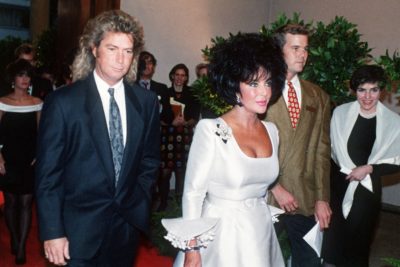
“I don’t think President Bush is doing anything at all about AIDS,” she told the audience at the Eighth International AIDS Conference in July 1991. “In fact, I’m not even sure if he knows how to spell ‘AIDS.’”
19. She made gay men feel welcome.
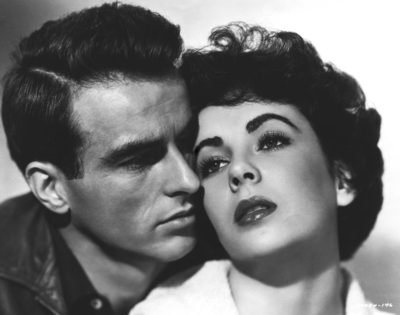
Taylor had friendships with famous gay men most of her life—Roddy McDonnell, Montgomery Clift, Tennessee Williams, Noel Coward, Malcolm Forbes, to name a few. But Mendelson says that connection extended beyond Hollywood: “When I was in Elizabeth’s world was the first time, I felt safe and not judged [for being gay]. I felt completely accepted. I didn’t feel that way until she was in my life.”
20. She even hung out at the Abbey.
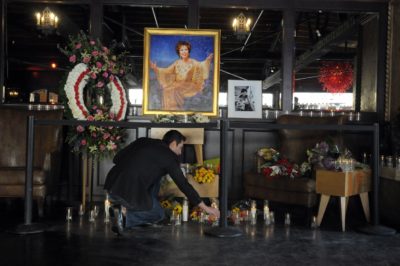
“We were out one day after a doctor’s appointment, and we were looking for a place to hang out,” Mendelson recalls. “Elizabeth wasn’t one to go to a gay bar–not because she didn’t approve, but she didn’t need to seek attention. It was a Thursday afternoon and it was early, so I suggested we go the Abbey. We just ordered appetizers and, after a little while, there were a few older gay men at the bar. After they had a bit to drink, they had the courage to talk to her. One man was in tears telling her how she saved her life.”
They returned the next night but there were paparazzi everywhere. “She said, ‘Oh, I’m not going here with this,” Mendelson adds. “I knew Revolver had a back room so we went there and sat in the back talking with the manager. When we left, he said “Miss Taylor, I just want to thank you for everything you’ve done for us.’ She replied, ‘Well, love, I’m still here! If you need anything just tell Tim and I’ll come running.’”
Taylor lived in Bel Air—the gays of WeHo were her neighbors. “She had done so much in her life for us and she still was willing to more,” says Mendelson.
21. Even in death, she kept giving.

Taylor passed away at age 79 in 2011, directing a portion of profits from her businesses, such as White Diamonds, to continue to support The Elizabeth Taylor AIDS Foundation.
22. She taught her family to be activists, too.
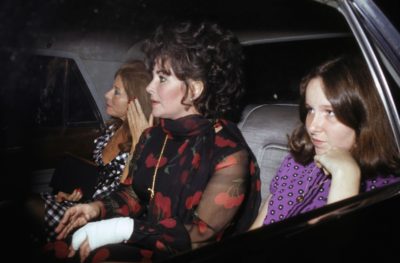
Many of Taylor’s grandchildren and great-grandchildren are involved in the Elizabeth Taylor AIDS Foundation—grandson Quinn Tivey appeared on The ViewOpens in New Window to present the Elizabeth Taylor Legacy Award to co-host Whoopi Goldberg in 2016. (Tivey also revealed the foundation has just secured $4 million in funding to help people with AIDS in Malawi.)
While Taylor was celebrated for her great beauty and talent, granddaughter Laela Wilding told PeopleOpens in New Window, “I would love for her to be remembered as one who stood up for herself, and stood up for others. In this way, she was a great role model for me.”
23. She never gave up.
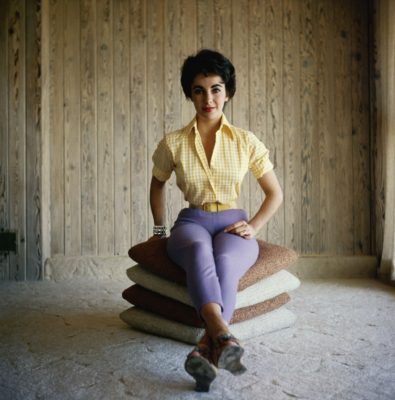
In the early years of the epidemic, hope was in short supply. But Taylor had overcome scandal, addiction, disability, and the deaths of loved ones—she was not one to give in to despair.
“You just do it,” she once famously said. “You force yourself to get up. You force yourself to put one foot before the other, and God damn it, you refuse to let it get to you. You fight. You cry. You curse. Then you go about the business of living. That’s how I’ve done it. There’s no other way.”


